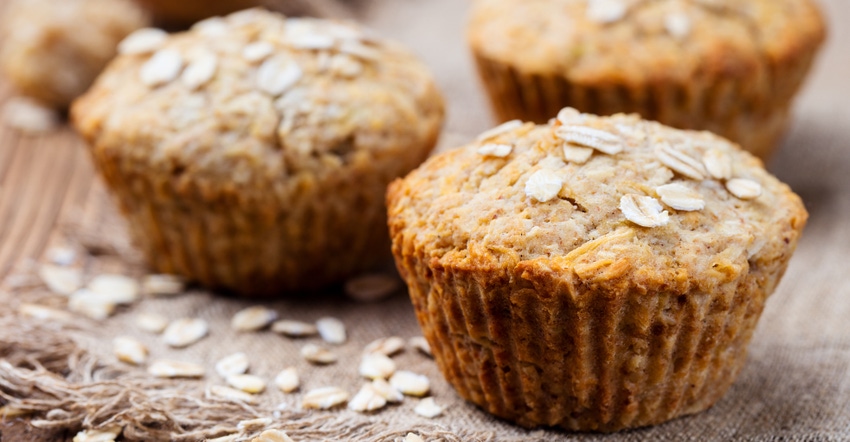Clean label bakery fuels innovation
Product formulators have a host of functional, clean label ingredients and solutions in their toolboxes to create functional bakery products that deliver on consumer expectations.

Consumers are scanning the bakery aisle for healthier options, but they still want permissible indulgence, especially around such goodies as breads, cookies, pastries and muffins. Brands looking to gain a foothold in the clean label bakery space must strike a balance between following industry trends, identifying white space in the sector and creating innovative, functional products that feed consumer desire for better-for-you products made with natural ingredients that look and taste just as good, if not better, than conventional baked goods.
The bakery category is evolving to meet consumer demand for products that address a range of health benefits, including heart and digestive health, weight management, allergen-friendly and much more. However, replacing or reducing critical ingredients such as fat, fiber, sodium, protein, gluten, sugars and emulsifiers with clean label counterparts isn’t as easy as it sounds because they all play key roles in a product's texture, visual appeal, moisture retention, stability, shelf life and taste. Fortunately, product formulators have a host of functional, clean label ingredients and solutions in their toolboxes to create functional bakery products that deliver on consumer expectations.
The global market for bakery products is projected to reach US$574 billion by 2023, driven by the changing health, indulgence and convenience needs of consumers, as well as the rising popularity of healthy, organic and all natural baked goods, and consumption of bread and biscuits/cookies, according to the 2019 “Bakery Products - Market Analysis, Trends and Forecasts” report from Global Industry Analysts Inc. Bakery products with clean labels and health and wellness claims, frozen finished products and artisanal products are witnessing robust growth, particularly among Millennials and health-conscious consumers whose buying patterns are influenced by clean label.
The report noted evolving health, indulgence and convenience needs of the consumer will drive worldwide market growth. Other major consumer trends influencing demand for bakery products include growing prominence of locally sourced, environmentally friendly, free from, multigrain and whole grain-based baked goods that are low-fat, low-calorie, organic and enriched with vitamins and minerals. Additional growth drivers include fortified, functional, reduced-sugar and gluten-free bakery products. While bread remains the most consumed bakery product worldwide, future demand is expected to come from cakes and pastries.
The bakery products market is vast and includes bread and rolls, cakes, biscuits/cookies, morning goods, doughnuts and pastries, among others. According to a recent report from Mordor Intelligence, bread and rolls have the largest market share, accounting for approximately 45 percent of demand.
Many ancient grains such as amaranth, quinoa, buckwheat, millet, sorghum and teff are naturally gluten-free, making them the go-to choice for manufacturers in the bakery space. What’s more, they also can boost bakery products’ whole-grain nutrition and fiber content.
The rise of novel plant proteins also has roots in the clean label movement. Where once, high-protein products were exclusive to the sports nutrition market, today they’re considered a healthy option for mainstream consumers. Those same consumers are paying more attention to the source of the protein, with a growing demand for plant-sourced proteins. A variety of new plant-based ingredients are showing up in bakery applications, from flours made from peas and pulses, to soy protein. Soy-based proteins are currently the most prominently used plant-based proteins in bakery, making up more than half of both the global and U.S. markets for baking mixes and ingredients. With a label-friendly perception, soy-based flours can function as well as other protein sources in bakery formulations. Soy flour, for example, can help create crumb structure and improve the elasticity of dough, increase water absorption, and replace eggs in bakery applications, as well as lengthen shelf life.
Health concerns and the shift to reduce added sugars in products have also made sugar reduction a top priority for food and beverage brands. What’s more, increased attention to added sugar intake on packaging—as well as consumer demand for sweeteners that are natural, sustainable and healthful—provides brands the opportunity to increase use of alternative sweeteners when developing or reformulating products.
As the industry continues its shift toward clean label, product formulators must be mindful that some ingredients are not a 1:1 replacement for sugar, and reformulation can affect product traits such as mouthfeel, texture, taste and functionality. Some flavor characteristics of functional ingredients such as certain proteins can create additional hurdles in reformulation where higher levels of sweetness are used to overcome inherent off-notes or bitterness. When exploring sugar reduction, the sweetness dynamics—including sweetness onset and linger—of the sweetener system are just as important in developing a great-tasting product.
This article was excerpted from INSIDER’s “Market opportunities in the clean label bakery aisle.” Click the link to read the deep dive in its entirety.
About the Author(s)
You May Also Like






.png?width=800&auto=webp&quality=80&disable=upscale)